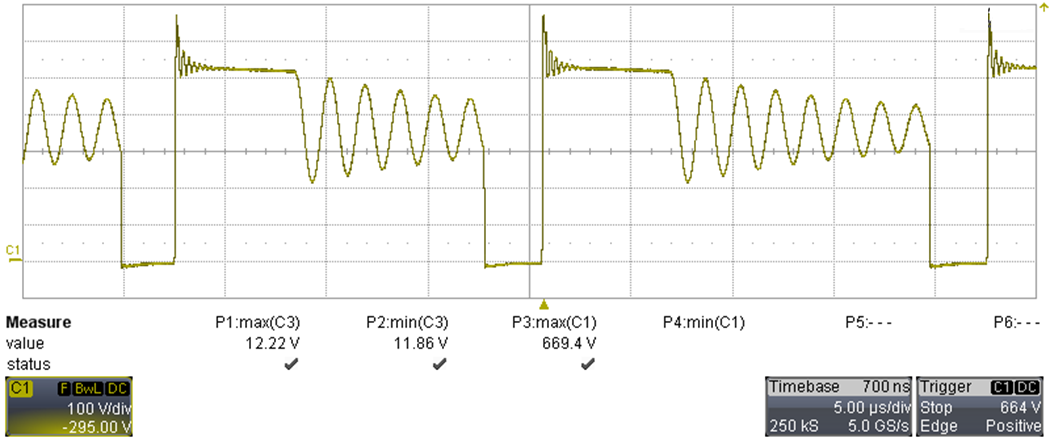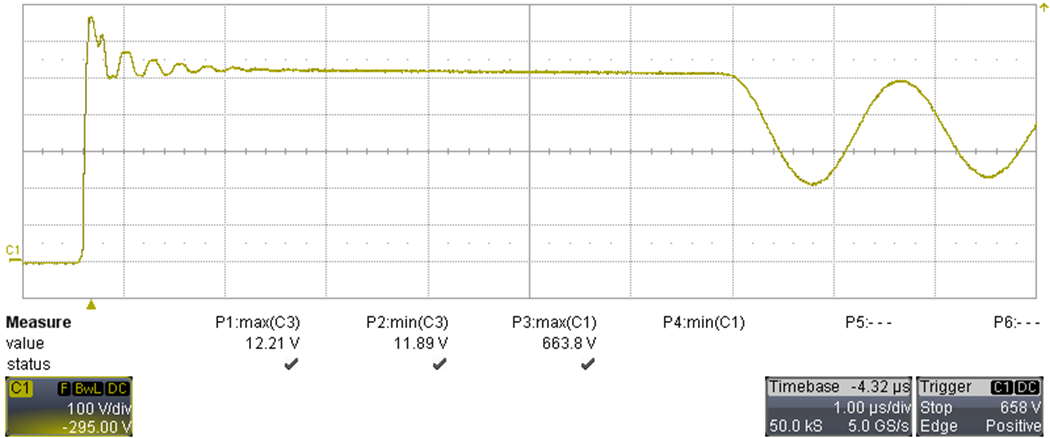TIDT339 june 2023
3.1 Switching on Q1 (VDS Voltage) at Full Load
The switching waveforms were measured by supplying the converter at maximum VIN of 265 VAC with 1.7-A load current.
 Figure 3-1 Waveform Q1-VDS (100 V/div,
5 µs/div, 200 MHz BWL)
Figure 3-1 Waveform Q1-VDS (100 V/div,
5 µs/div, 200 MHz BWL)The image in Figure 3-2 is the same measurement as in Figure 3-1 but with time base of 1 µs/div to enlarge the overshoot.
 Figure 3-2 Waveform Q1-VDS (100 V/div, 1 µs/div, 200 MHz BWL)
Figure 3-2 Waveform Q1-VDS (100 V/div, 1 µs/div, 200 MHz BWL)